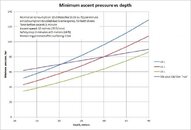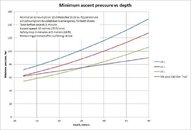Foxfish
Contributor
I just realized foxfish is the same person that asked and started this thread http://www.scubaboard.com/forums/advanced-scuba-discussions/470422-how-low-spare-air.html We are dealing with someone that likes to push the envelope in terms of running low on gas. Foxfish there is NO POINT in running low. Get bigger cylinders or doubles if you want more gas. Don't put your and your buddy's life at risk because you want to run liberal gas plans.
Are you seriously suggesting that anyone who begins an ascent at around 80 b or 1160 psi on a recreational dive from 30 m with a 12 L tank is showing a reckless disregard for safety. How many other people here consider that to be correct.
Yes, have a good read of the thread. You'll read similar arguments to the one on this thread. You may be relieved to know there isn't much comment from me. If you do find any of my comments that indicate I like to push the limits in a way that is unsafe let me know.
---------- Post added December 9th, 2013 at 09:37 PM ----------
I said they HAD been calm. No idea what happened to their breathing rates after all hell broke loose
That's not how I'd read it.
It would've been fine, but right at ascent one of the yoke o-rings blew out and emptied the tank with surprising speed. They ascended together like a textbook (we had been practicing for our DM course, so they had just done like 30 air-sharing ascents in a pool) and ran out of gas right before they reached their safety stop. Both were pretty comfortable in the water. Literally everything you were saying you'd do almost got them killed.event really sticks out in my mind. It just so happens that it was fantastically similar to what your described profile would be.





